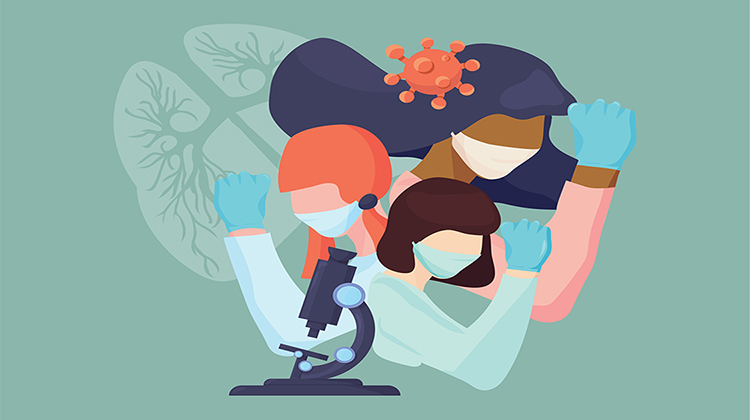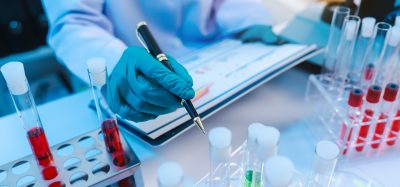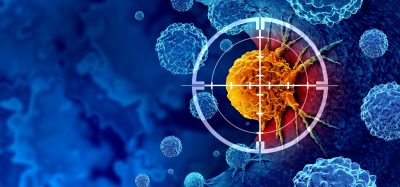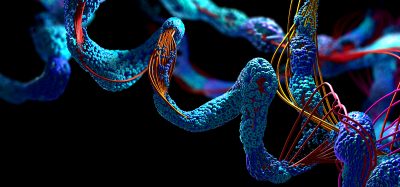Women in Stem with Dr Rachel Lagiakos
Posted: 31 May 2024 | Dr Rachel Lagiakos (Schrödinger) | No comments yet
Dr H. Rachel Lagiakos is a Senior Principal Scientist in the Therapeutics Group at Schrödinger which she joined in 2018. She completed her PhD in Synthetic Organic Chemistry at Monash University and began her medicinal chemistry career at Cancer Therapeutics (CTx) in Melbourne, Australia in 2012. At CTx, Rachel’s contributions to pioneering work drugging novel epigenetic targets led to a first-in-class asset in the clinic targeting ER+ breast cancer, including patients refractory to endocrine therapy. Inspiring her move to Schrödinger, Rachel’s interests are in the application of in silico technologies to accelerate the drug discovery process. She currently leads a talented team of multi-disciplinary scientists dedicated to discovering drugs for neurodegenerative disease and changing the way we approach CNS drug discovery.

Can you tell us about your journey in the field of STEM and the challenges you encountered along the way?
My journey has been paved by interesting and unconventional choices. Coupling my desire to be a scientist with my keen sense of adventure, I moved to Alaska out of high school to begin my undergraduate studies in chemistry, applying myself to my STEM classes whilst also climbing mountains and chasing Northern Lights. I continued that same adventurous trend with my postgraduate studies, doing a PhD in synthetic organic chemistry in Melbourne, Australia. From there, I was recruited to my first industrial position in medicinal chemistry, which was my dream role and the culmination of all those years of study. It has been over 10 years since I first entered the field, and I am just as passionate about my role today as I was back then.
In terms of challenges along the way, the common theme seems to have been subconsciously placing myself in situations where I was an out of place minority: a city kid from NYC in the middle of the wilderness; an American in a foreign land; and a woman in STEM. Each one of those scenarios brought with it feelings that I didn’t quite belong and hurdles from being different, but since fitting in was never an option, I instead chose to harness and embrace my uniqueness, using that as a strength to help me stand out.
What inspired you to pursue a career in STEM?
My career choice was made from an early age when I was deeply affected by both my Uncle’s HIV+ diagnosis and then the extraordinary cocktails of antiretroviral drugs he took, which gave me another 20 years with him beyond his doctor’s initial grim projection. Drugs are a marvellous creation, dreamed up by passionate, driven scientists in a lab. There are very few professions that have the ability to make such a profound impact on human health and though few of us drug hunters will get the privilege to see a drug come to market, it is the promise of what can be that inspires us to try.
Could you share an example of a specific project or research that you have worked on and the impact it has had in your field?
One of the first programs I worked on in my career was drugging a novel, epigenetic target which had potential implications for the treatment of cancers. Not much was known about this target so we first needed to develop drug-like chemical matter to better understand the impact of pharmacological inhibition. I had the opportunity to take a leading role on the chemistry of this early work and from the compounds our team developed came highly favourable pre-clinical results, paving the way for a first-in-class investigational drug that is currently in clinical trials for patients with ER+ breast cancer, and excitingly, including the large subset of people who are resistant to endocrine therapy and currently have limited treatment options.
As a woman in STEM, what unique perspectives or strengths do you believe you bring to your work?
My emotion and passion – often used as negative descriptors of females – happens to be my greatest strength. It gives me the willingness to fight for what I think is right, even if it is an unpopular decision, and the resilience to wake up every day ready to tackle whatever challenge the day has in store. That passion has led to a relentless determination in my work, and I use that conviction to lead by example, inspiring my team to push the boundaries of what is possible by stepping outside of our comfort zones where the magic happens. Drug discovery is a challenging team sport and for a program to be successful, every team member needs to bring their best self. They are only going to do that when they feel valued and heard. Having the perspective of being so historically excluded drives my inclusive approach to leadership. Everyone has earned their seat at the table if they are capable, competent and compelled to be there.
What advice would you give to young women who are considering a career in STEM but may be hesitant due to societal stereotypes or perceived challenges?
There is no sugar coating the reality that the stereotypes and challenges are there, though the more we work to address bias – both the conscious and unconscious kind – the less there will be in the future. However, if STEM is your passion, then this is the path you must take. Own your uniqueness and make it part of your personal brand. Find the organisations that will embrace and empower you. Use your inner strength and determination to fuel your mission, reminding yourself frequently and unapologetically that you are enough. Stick with it – the field only gets stronger by having your diverse voice in it!
In your opinion, what can organizations and institutions do to create a more inclusive and supportive environment for women pursuing STEM careers?
When we look at the three pillars of DEI, hiring for representation is the first step given all the positive benefits that diverse people with their varied perspectives bring to an organization. Some institutions think ticking this first box is enough: we’ve hired an underrepresented individual, great, our job here is done. No, it isn’t. Once hired, organizations must ensure equity across pay and opportunity. There has been much work done in recent years to bring visibility to the issue of equitability and these dialogues are moving us in the right direction, albeit slowly. The final pillar of DEI, which is making the workplace more inclusive, seems to be the most challenging. Men earn a seat at the table through their promise and potential, whilst women have to prove themselves. This dogma gets compounded by historical tendencies and biases that continue to pigeonhole women into administrative and/or nurturing roles, not giving us opportunity to actually demonstrate our potential. It also perpetuates the imposter syndrome that so many women face – myself included. Active efforts need to take place whereby women are given roles of visibility and importance, where they are supported and mentored in those roles, and granted seats at tables of significance, where our presence, contributions and opinions are valued, supported and sought after.
How has your research in STEM contributed to advancements or improvements in your field, and what potential future applications or implications do you foresee based on your work?
I currently lead a talented team of multi-disciplinary scientists who are dedicated to discovering a treatment for Parkinson’s Disease, a debilitating condition with significant unmet medical need. We are taking a novel approach towards drugging a target of interest and have set out to develop chemical matter to modulate the target in a way that aims to ameliorate the disease while limiting potential for adverse effects. Working in the central nervous system (CNS) space where we need to get drugs to their site of action in the brain and past the protective blood brain barrier adds an extra layer of complexity to the already challenging discovery process. To tackle this, our team recently developed a computational method to accurately predict the ability of a compound to cross the blood brain barrier. Integrating this method into our workflow impressively allows for the vast majority of ligands we advanced into in vivo studies to be brain penetrant, proving incredibly impactful in guiding decision making, reducing animal usage, and fast tracking progress on the program. And of course the faster we move, the better, as through this work, we hope to develop and bring to market a safe and effective disease-modifying therapeutic to help Parkinson’s disease patients.
Looking ahead, what exciting developments or advancements do you foresee in your field of STEM, and how do you envision your own research contributing to those future innovations?
Working at the intersection of medicinal and computational chemistry as an early adopter of integrating in silico tools into the discovery process, I’ve seen first hand the technological advances that have been made over the past five-plus years. And with every advance, our toolbox as medicinal chemists grows. We now have the processing power to be able to virtually screen libraries of billions of compounds, vastly expanding our reach to find novel starting points from which to begin our quest to develop that needle in the haystack drug. Incredible advances in machine learning-driven tools allow us to predict the 3D structure of previously unsolved proteins, unlocking the power of structure-based drug design for drugging these targets, and most recently, the ability to predict protein assemblies, which contain both the protein and putative small molecule binders. Not only can we predict which ligands may bind favourably to their receptors through physics- and ML-based approaches, there are also many advances ongoing to predict ADMET properties of these molecules, empowering chemists with the information to make more informed choices. The field is currently exploding making it an exciting time to be a contributor to it.
About the author
 Dr H Rachel Lagiakos
Dr H Rachel Lagiakos
Senior Principal Scientist, Therapeutics Group at Schrödinger
Dr Lagiakos joined the company in 2018. She completed her PhD in Synthetic Organic Chemistry at Monash University and began her medicinal chemistry career at Cancer Therapeutics (CTx) in Melbourne, Australia in 2012. At CTx, Rachel’s contributions to pioneering work drugging novel epigenetic targets led to a first-in-class asset in the clinic targeting ER+ breast cancer, including patients refractory to endocrine therapy. Inspiring her move to Schrödinger, Rachel’s interests are in the application of in silico technologies to accelerate the drug discovery process. She currently leads a talented team of multi-disciplinary scientists dedicated to discovering drugs for neurodegenerative disease and changing the way we approach CNS drug discovery.
Outside of work, Rachel’s commitment to educational outreach resulted in the conception and organization of a highly successful multi-day medicinal chemistry workshop and the delivery of recurring lectures at the Gordon Research Seminar on Medicinal Chemistry and at Drew University’s Residential School on Medicinal Chemistry. Rachel is the incoming Chair of the First Disclosures session at the American Chemical Society National Meetings, a new member of the ACS-MEDI Long Range Planning Committee, the 2024 Poster Chair for the Gordon Research Conference on Medicinal Chemistry and in 2025, will Chair the Gordon Research Seminar on Medicinal Chemistry. She is an active voice for diversity and inclusion in the Sciences. Some of Rachel’s proudest accolades include recognition as a 2012 SciFinder Future Leader in Chemistry; the 2017 Greg Roth Award at the Gordon Research Conference on Medicinal Chemistry, awarded to a promising young medicinal chemist; and the 2023 Philip Portoghese Journal of Medicinal Chemistry Early Career Lectureship Award for her contributions to the field of medicinal chemistry.
Related topics
Drug Delivery, Drug Development, Drug Discovery, Drug Discovery Processes
Related organisations
Schrödinger







